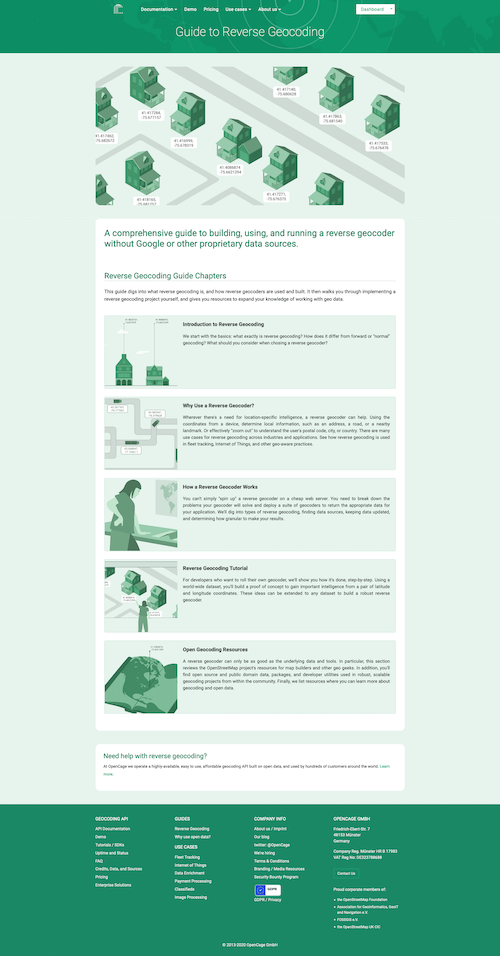Hi everyone,
Over the last years use of the OpenCage geocoder has been growing nicely (thank you!). That has been great for us as a business and brings us ever closer to achieving our goal of getting more people using open data.
Nevertheless, growth almost always brings with it some growing pains, and in our case that is providing support - answering the questions users and potential users of our service have. Many of the developers signing up for OpenCage don’t have a deep background in location based technologies and so understandably have questions. To address exactly this issue I am delighted to announce that we’ve published a comprehensive guide to reverse geocoding.
Many users of a geocoding API assume their usecase is the norm; that everyone else has the same pattern of use they have. In reality organizations large and small all around the world have many, many different needs and requirements for a geocoding service. While there are certainly common use-cases that come up again and again, we’re continually - yes, even now after many years of operating OpenCage - seeing new ways to use geocoding, and thus different requirements. Our hope with the guide is that we can help show the basic concepts of reverse geocoding with open data, but also that we can make transparent the many trade-offs such a service has to consider.
Our guide is split into five different chapters, starting off - as you would expect - with an introduction that covers the basics of reverse geocoding, then we go into a deep look at some of the common use cases for reverse geocoding. Next up we pull the curtain back a bit and run through how reverse geocoding works, listing all the different factors the software needs to consider. Chapter 4 is a hands on tutorial where we go step by step through the process of creating a reverse gecoder. Finally, we close with a roundup of additional resources for learning more about reverse geocoding.
We hope all of that helps people new to the geo space (and long-time geo veterans!) quickly get up to speed on all aspects of the seemingly simple but actually fairly complex process that is reverse geocoding.
Please let us know what you think. What reverse geocoding topics have we overlooked?
The reverse geocoding guide of course begs the obvious question of whether and when we’ll be producing a similar guide for forward geocoding. Yes! We’ll move on to forward geocoding in the future.
In the meanwhile, we wish you happy reading and reverse geocoding,
